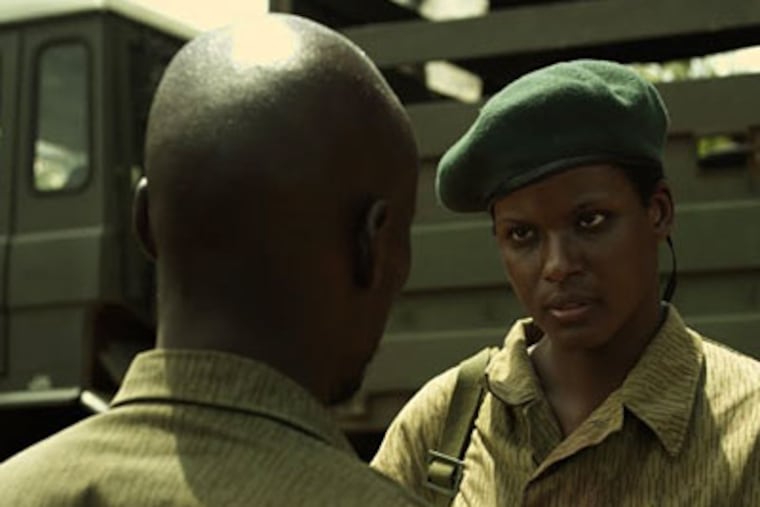From atrocities, an aftermath of healing
A speech about forgiveness - eloquent and compelling - sets the tone early in Kinyarwanda. A woman leading a "Reconciliation and Reeducation" session addresses both survivors of the Rwandan genocide and a group of Hutu perpetrators - young militia fighters who took machetes and guns to women, children, and Tutsi men.

A speech about forgiveness - eloquent and compelling - sets the tone early in Kinyarwanda. A woman leading a "Reconciliation and Reeducation" session addresses both survivors of the Rwandan genocide and a group of Hutu perpetrators - young militia fighters who took machetes and guns to women, children, and Tutsi men.
In all, it is estimated that 800,000 people - mostly Tutsis, but also pro-peace Hutus - were killed during the 1994 tragedy. It was a brutal postscript to the civil war that racked the East African nation through the early '90s.
Healing and acceptance are overriding themes of Alrick Brown's quiet, thoughtful film, a winner this year at the Sundance and Philadelphia Film Festivals. Through a series of interconnected stories, looped and overlapped in the manner of Paul Haggis' Crash and Alejandro González Iñárritu's Babel, Kinyarwanda offers glimpses into the lives of Rwandans, young and old, religious and radicalized, in the wake of nightmarish carnage.
There are stories of a Tutsi woman and the Hutu man she loves, of a priest and an imam, of a little boy who innocently leads gunmen to his family's door.
Kinyarwanda, the first film to be produced by Rwandans, does not linger on the violence, the atrocities. Instead, it reflects on the aftermath, and the healing - and also the inevitable impulse toward vengeance - that ensues. If the performances are sometimes stiff, or amateurish, Brown's intent is never less than lofty. By detailing the allegiance between Tutsi Muslims and Christian Hutus, and the fatwa issued by a Muslim leader forbidding his followers to participate in the massacres, the film is hopeful rather than horrific, even as it describes events of impossible savagery and hate.EndText